This is part five of our series on the history of Birch Cliff Public School, written in 1966 for the school’s 50th anniversary. We’re happy to report that we now know the author of this document — Virginia Sullivan.
In June 1922, the cornerstone of the new Scarborough High School was laid and the entrance pupils that year, 9 in all, attended classes in the basement of the Birch Cliff United Church until November 11th when the school was finished.
Later re-named R.H. King Collegiate in honour of its first principal, the high school had a staff of four teachers.
Children from Birch Cliff graduated to R. H. King until the fall of 1964 when Birchmount Park Collegiate was built in Russell’s Field.
1923 Birch Cliff PS Photo
On June day in 1923, the 497 pupils of Birch Cliff school assembled on the front lawn for a group picture.
The photograph hangs in the front hall of the school and in the background is a glimpse of the lake, a corner of Taylor’s Drug Store and the radial tracks on the opposite side of Kingston Road.
Scarborough population 10,000
At the September, 1925 meeting of ratepayers it was reported that Scarborough now had a population of over 10,000 and that 27 births, 10 deaths and four marriages had been recorded in the Township in the last month.
At was at this meeting that a group suggested that the area of Birch Cliff south of Kingston Road be incorporated as a new village, “Scarboro-on-the-Lake.”
Early talk of amalgamation
This was strongly countered by another group who favoured amalgamation of all outlying suburban areas within Toronto.
This proposal was later rejected by the City Council on the grounds that these suburban areas (Victoria Park, Mimico, Belfontaine, Birch Cliff) were but sparsely settled and widely separated. “A vision” of ‘Metropolitan Toronto’ would have to wait until a much later day,” the mayor said in a newspaper account.
When they read the newspaper the children of Birch Cliff skipped “News of our Suburban Areas” in favour of the funny papers – Dumb Dora and Barney Google. While the grownups discussed the reason for higher taxes (new schools), the children concentrated on the important matter of getting ready for another school fair.
Growing veggies in the playground
Late in the 20’s Morley’s Field was turned over to the pupils for gardens. The boys’ gardens were separated from those of the girls’, although the boys were expected to help the girls with heavy digging, and the girls reciprocated at weeding time.
Tended carefully, even in the summer months, the harvest from these gardens was used for free lunches for those who wished to stay at noon. The pupils had the excellent experience of not only growing the produced, but also preparing and serving it.
Lean years
Lean years though they were, the pupils of the 20’s and early 30’s stored up many happy memories untouched, as such memories are, by mere economic conditions.
A great number of the pupils of this period still live in Birch Cliff. Many a boy who pushed a hand-mower over lawns on Harding for 5 cents a house, navigates a power-mower on his own grass on Hollis or Queensbury today.
The arrival of Lorne Wideman
One such pupil tells how the boys looked forward to meeting their newest male teacher in 1935 – a man by the name of Lorne Wideman. He boarded in the home of the Prudhommes on Avalon Road, along with several other teachers.
A tall, husky young man, he was put in charge of the biggest boys in the school – 45 grade 8 students. A few years later he had a class of 523 boys, in Room 7. Mrs. Isabel Moore taught the grade 8 girls in those years.
Fire at Mitchell’s store
That fall there was a fire in A.E. Mitchell’s store and post office at Birchmount and Kingston Road, causing damage amounting to $7,000. Several people narrowly escaped.
Rudy Vallee headlined the Toronto Exhibition, with Mary Pickford as special guest.
Parents were beginning to chafe at the expense of schoolbooks for high school students, for although the newspapers reported the depression was on its way out, it cost between $3.50 and $4.00 to equip a grade 9 student with texts.
The same former student recalls that Pontiac came out with a car with a silver streak; the headlines in the papers were about Addis Ababa and Mussolini; there were smaller items inside about a man called Hitler in Germany, and five sets of twins enrolled in Birch Cliff School.
~~~
Next time: The 1940’s and 1950’s – from village to urban area.
To read more of our series on the history of Birch Cliff Public School:

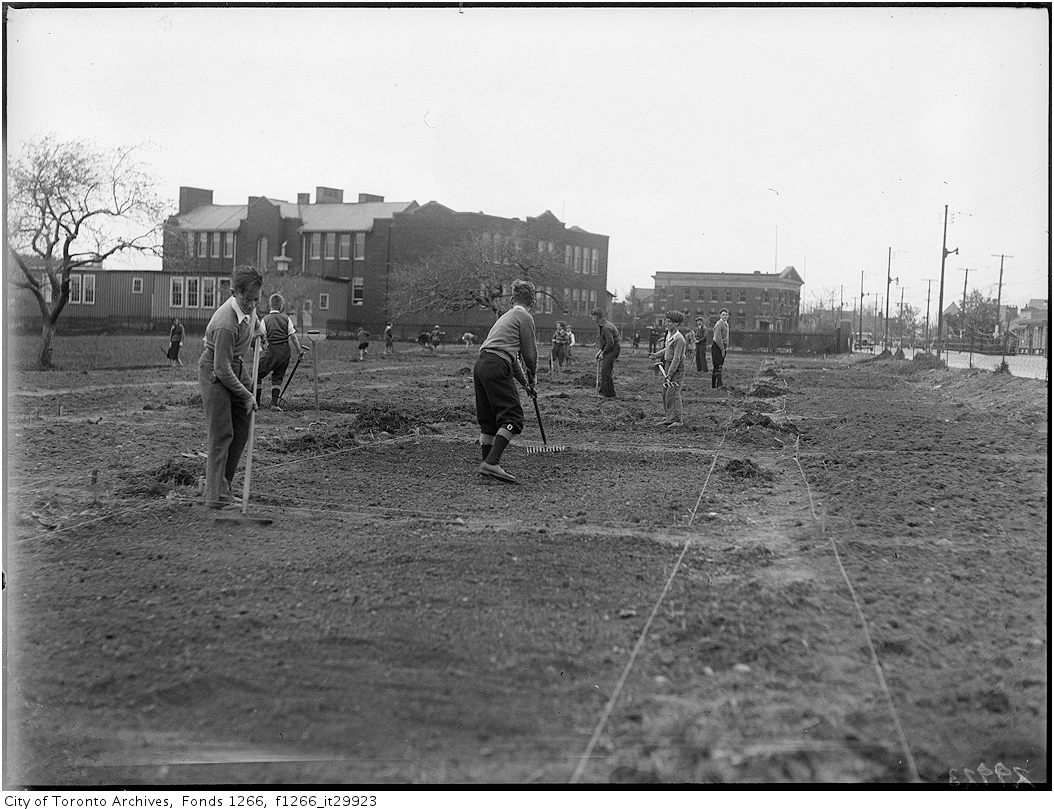
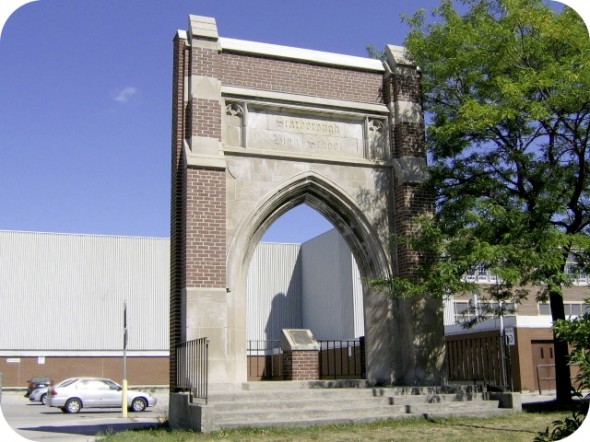
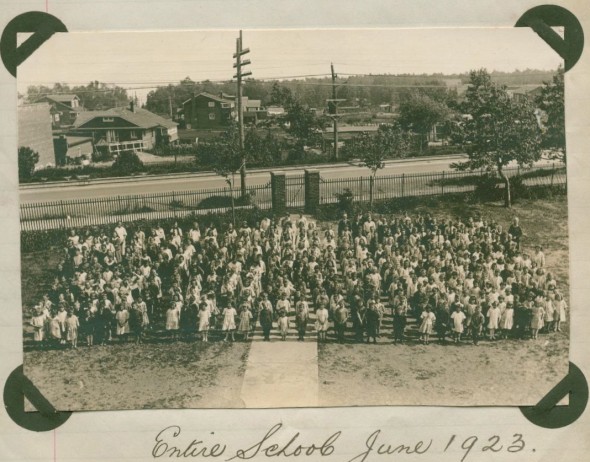
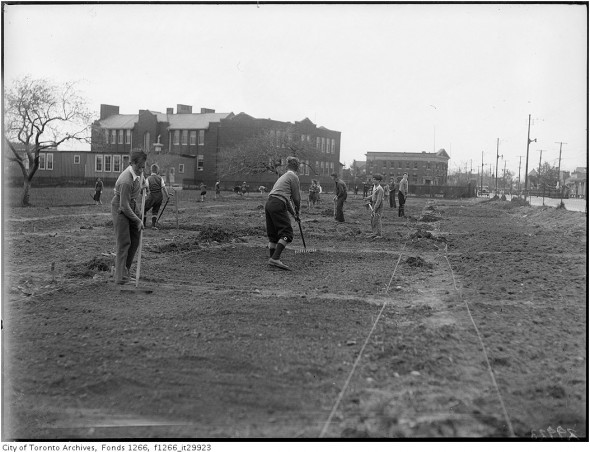
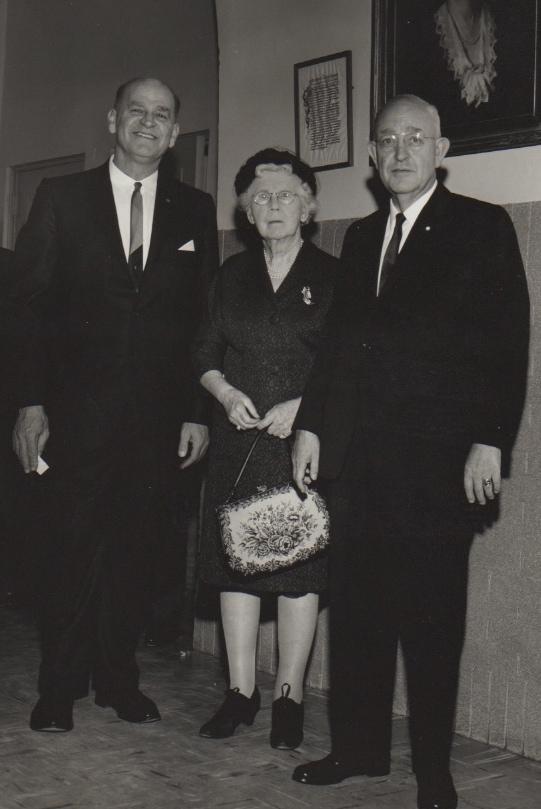
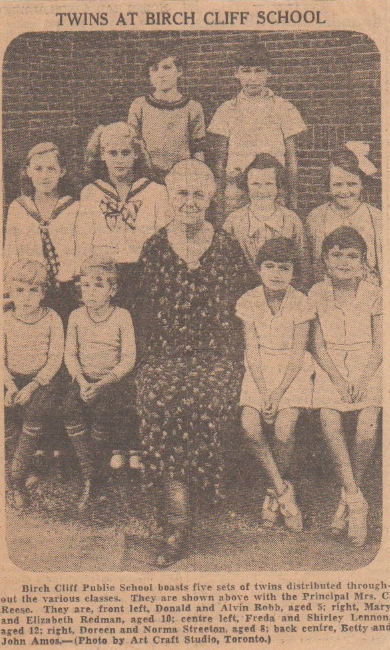






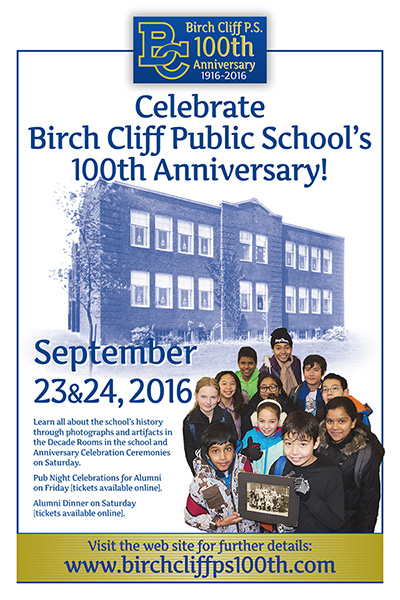
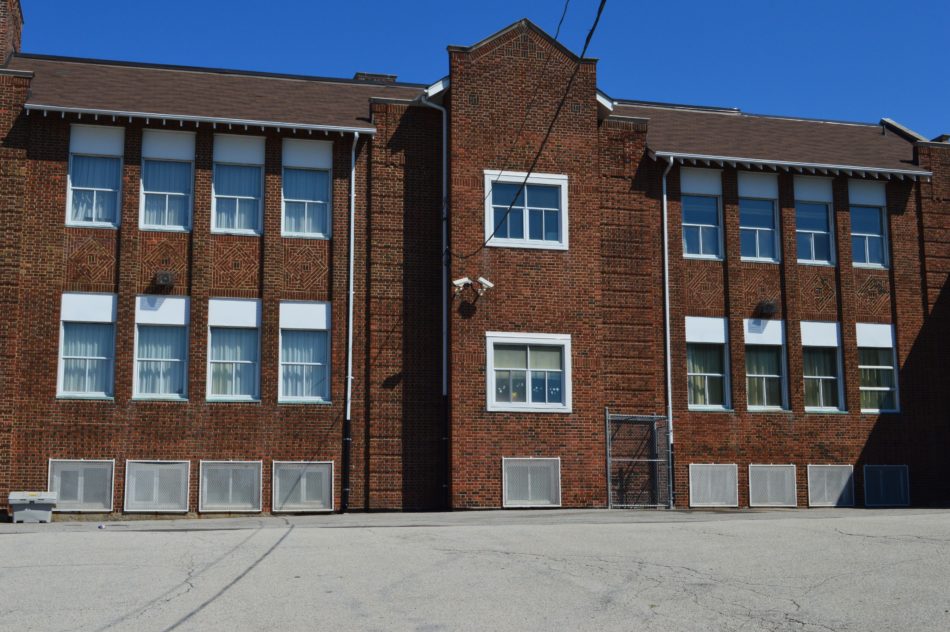
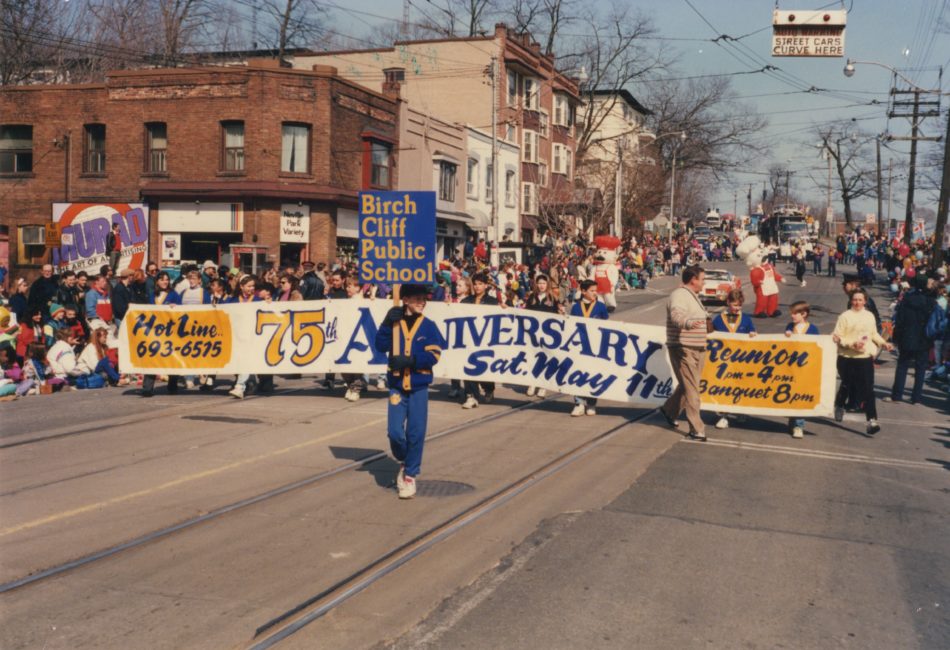
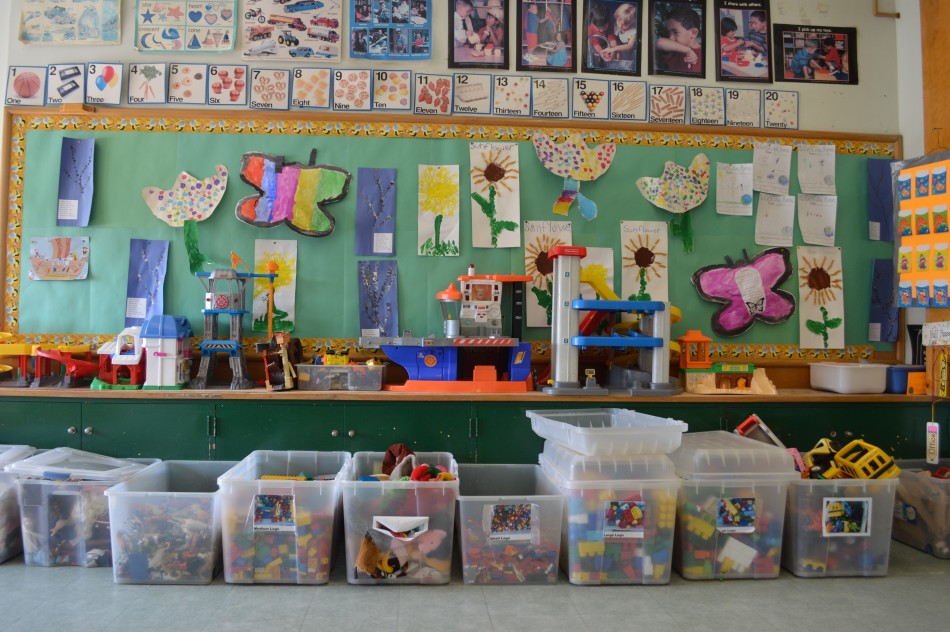
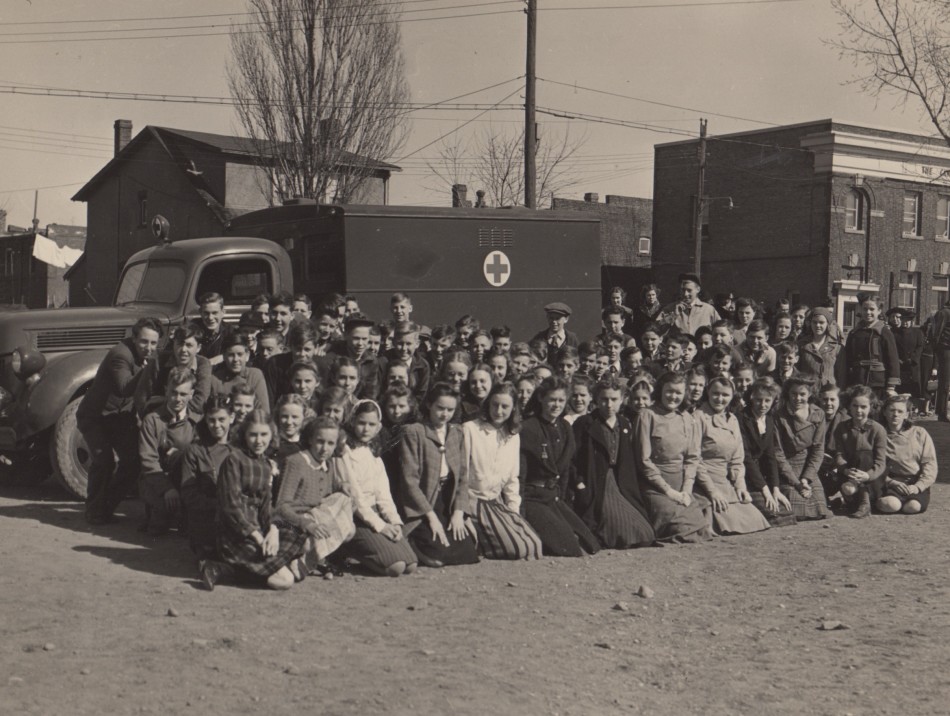
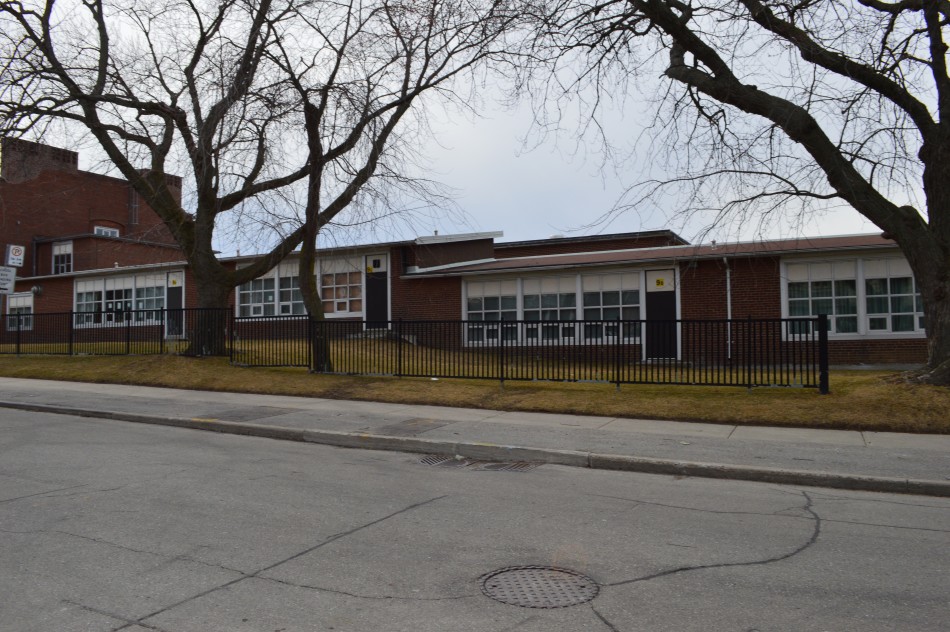
Thanks for this part of the school history. Just a note, the tracks seen in the photo are the ‘radial’ tracks, not ‘radio’ tracks. The word ‘radial’ derives from the nature in which those kinds of light, surface railways ‘radiated’ outward from the city centres.
Great to see the photo of Lorne Wideman, I remember him well from the 1950s-1960s and his habit of hitting fly balls out to kids during recess or lunch hour. He was truly the epitome of a teacher and cared very much for his students.
Thanks for spotting the error Grant. It was a typo on my part and I have fixed it. It’s interesting to me that so many former students of the school have such warm memories of Lorne Wideman. He must have been quite a guy. If you look at the comments section under the following post, you will see that many people fondly recall catching those fly balls. http://www.birchcliffnews.com/birch-cliff-p-s-history-part-2/
I attended Birch Cliff from 1940 until 1948 and remember Lorne Wideman as my teacher and also my Principal.A story was told at the last big reunion,or perhaps his retirement about Mr. Wideman in the early days.He apparently grew up on a farm and had Mennonite roots and believed that boys should all be proficient with carpentry; a talent which is still current in Mennonite communities in Bruce County.He obtained funds from the Board,and built two carpenters work benches ,in the basement of the home where he was boarding and arranged to have them installedin the basement of the school.They were excellent quality,because I used them when I was there.
He frequently knocked out flys in the schoolyard and would sometimes hold up his hand over his head with fingers spread.The boy who caught that fly would be given 5 cents!! Alot of money in those days.